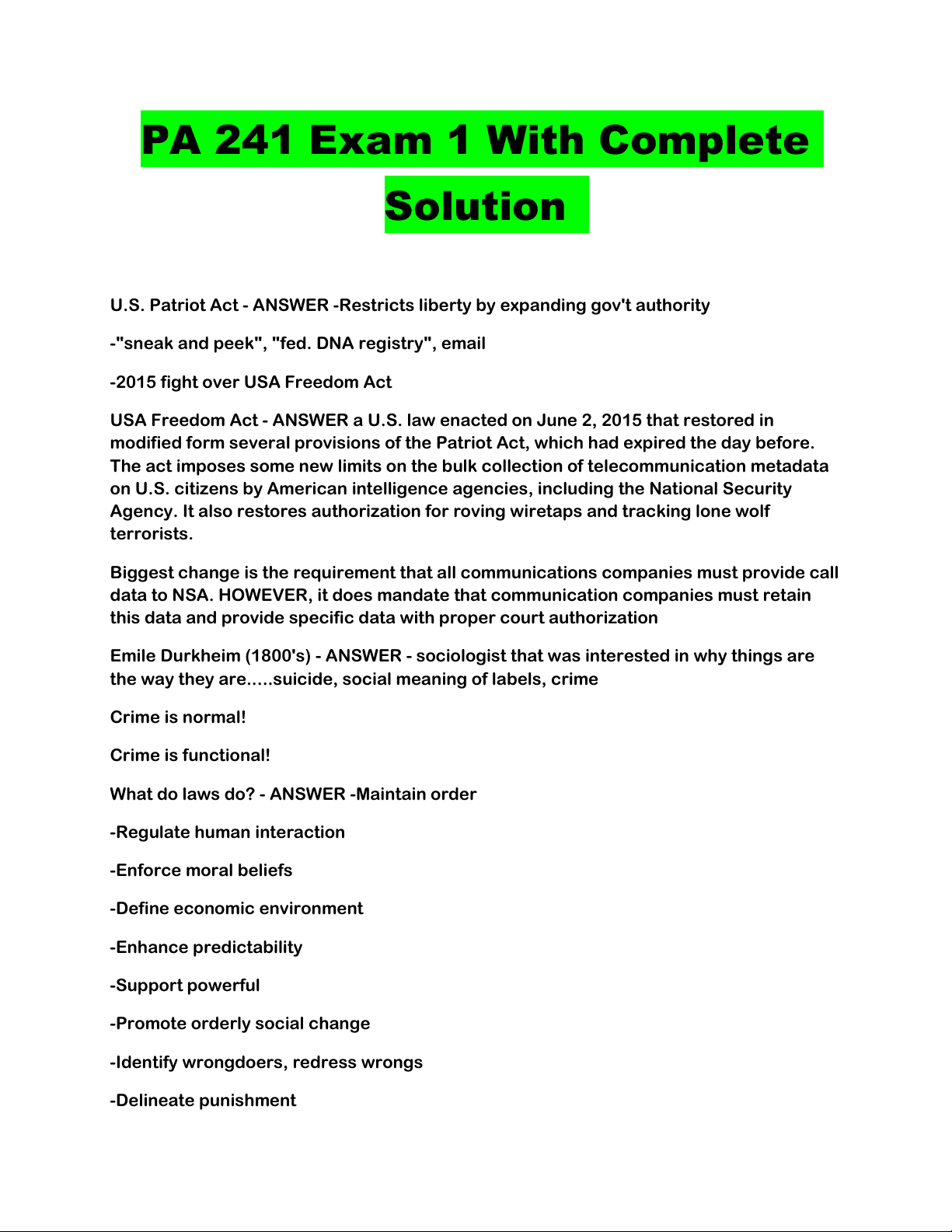
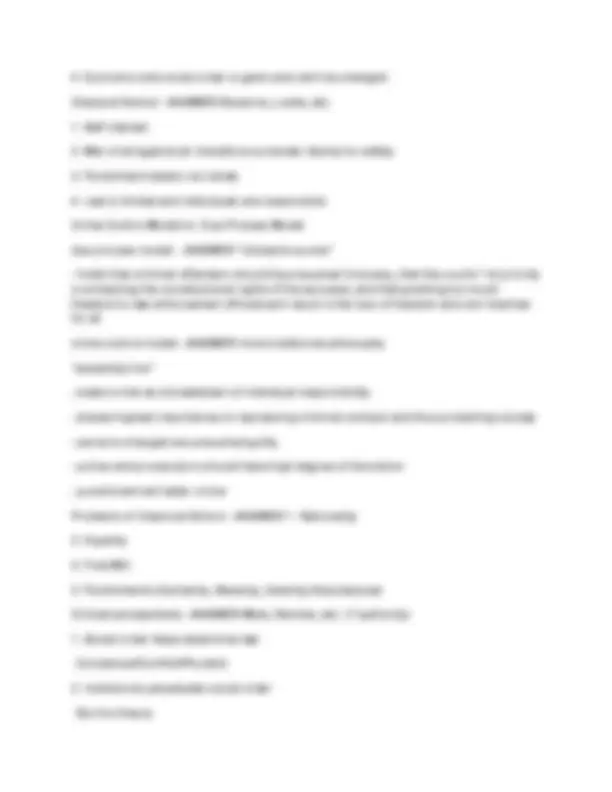
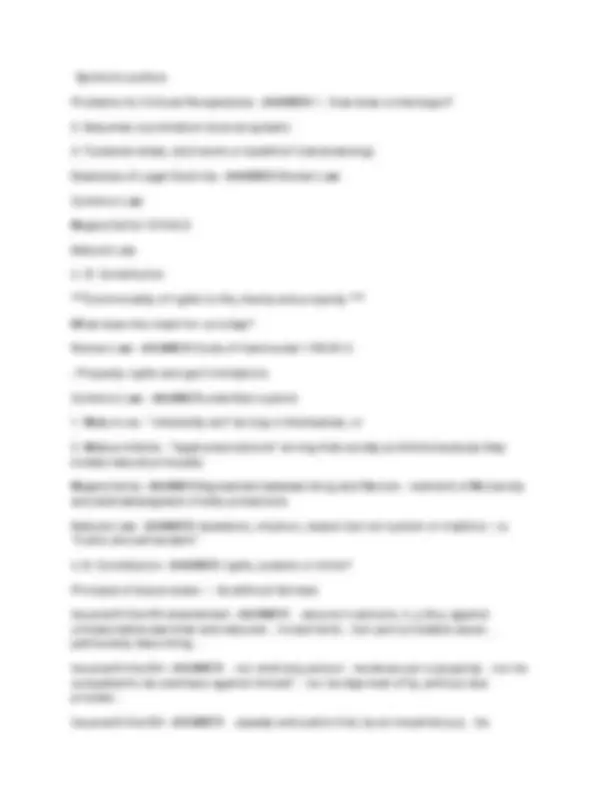
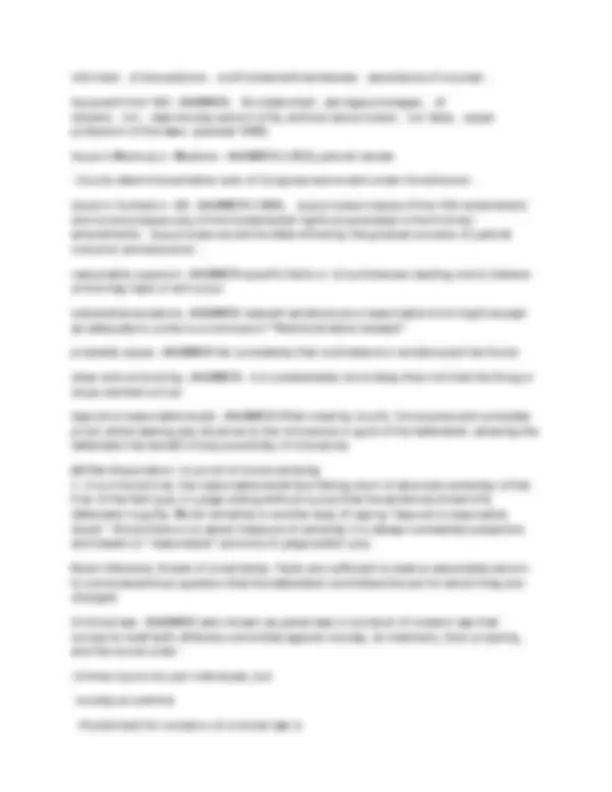
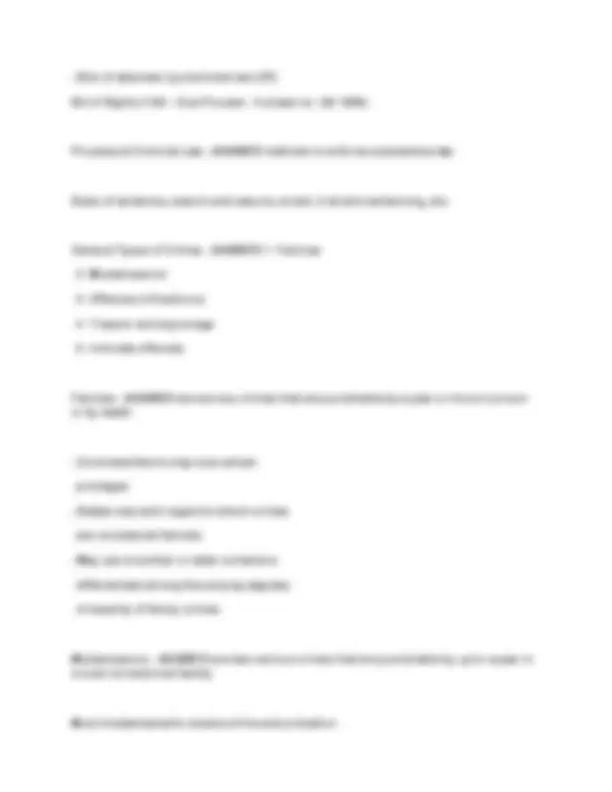
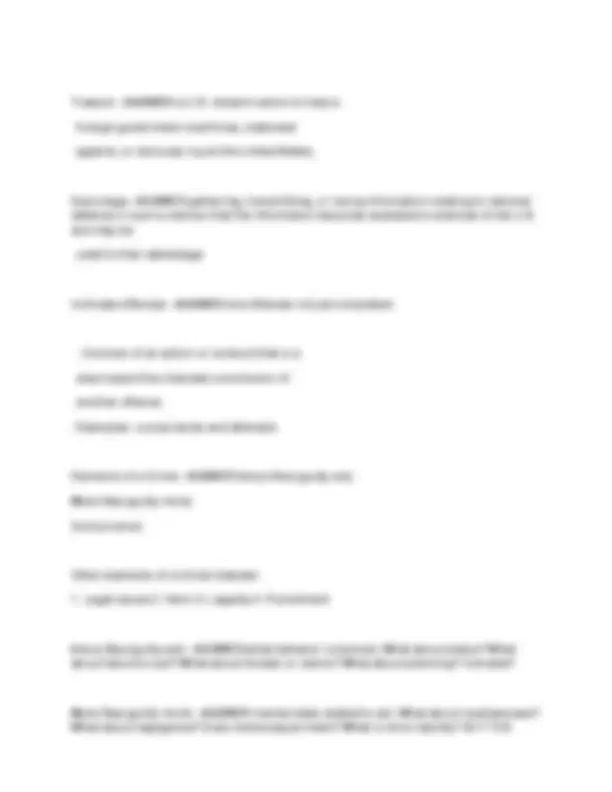
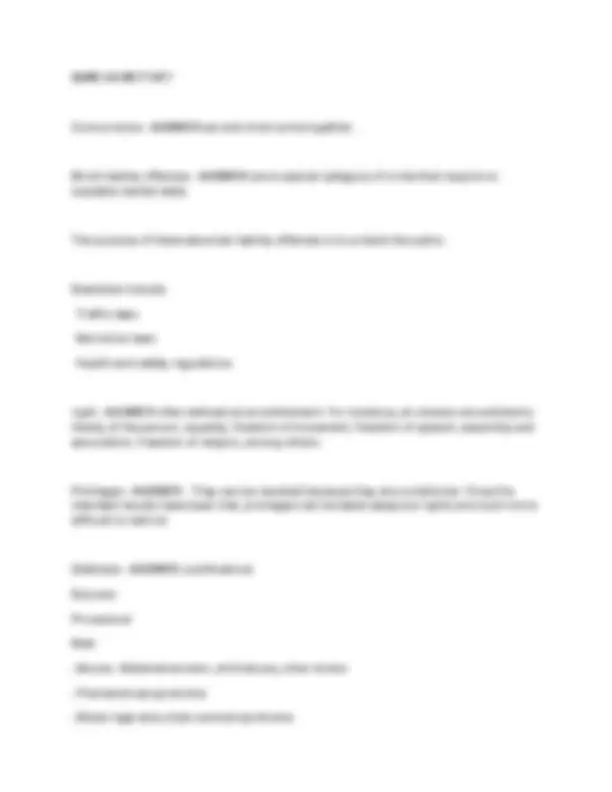
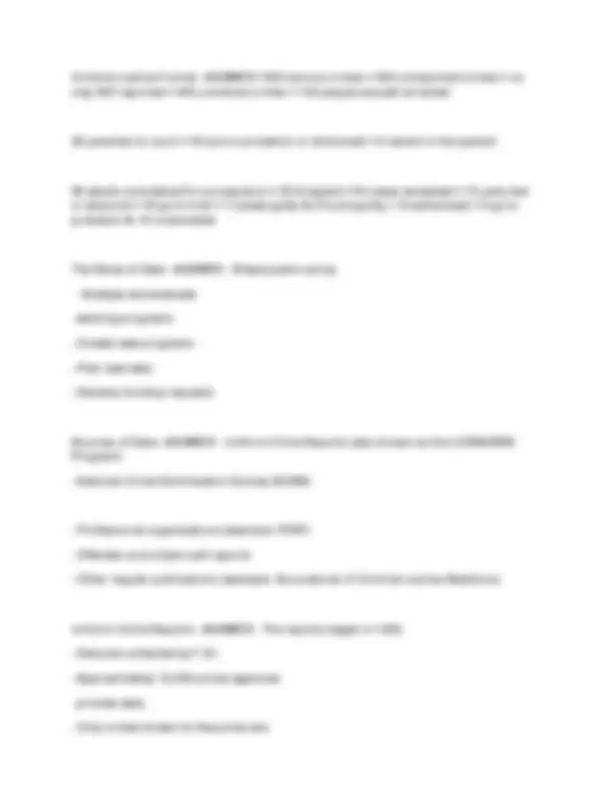
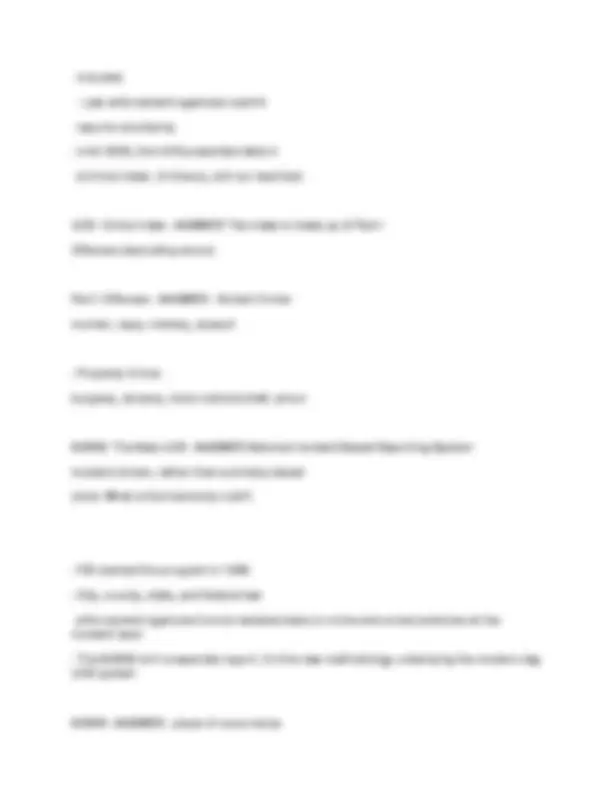

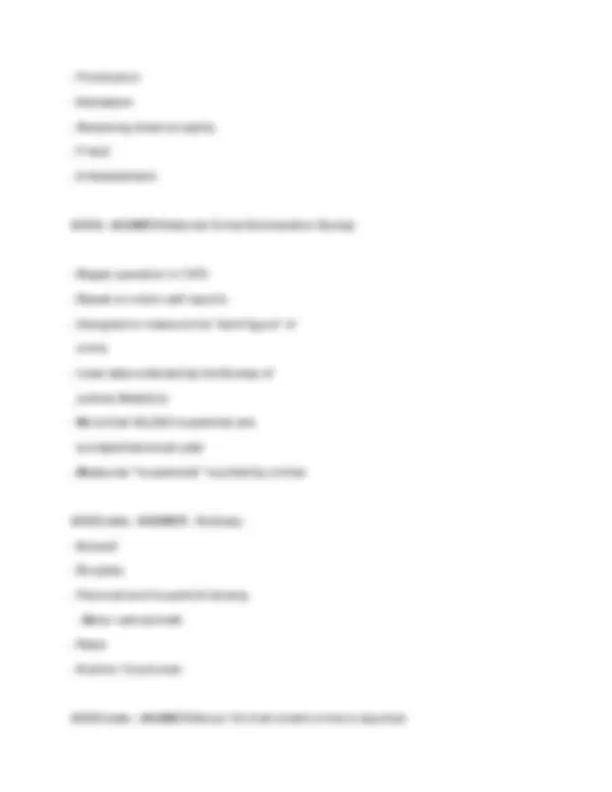
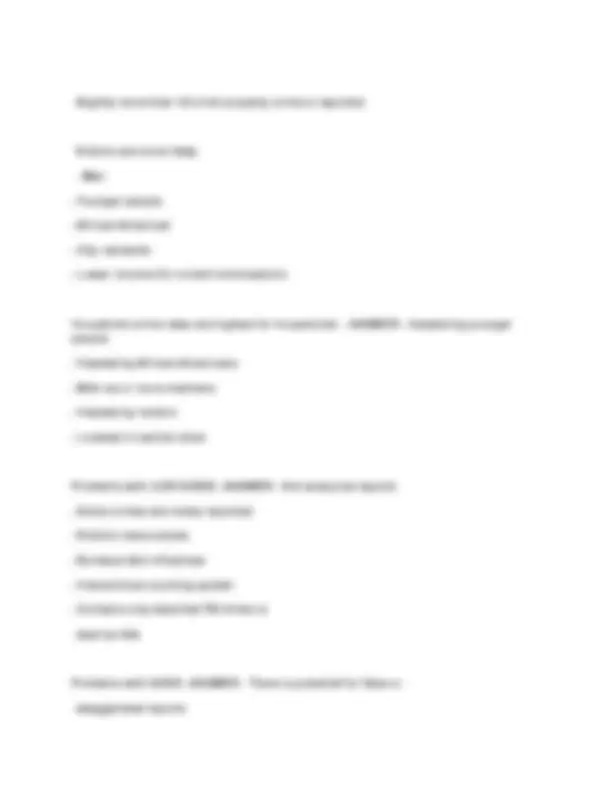
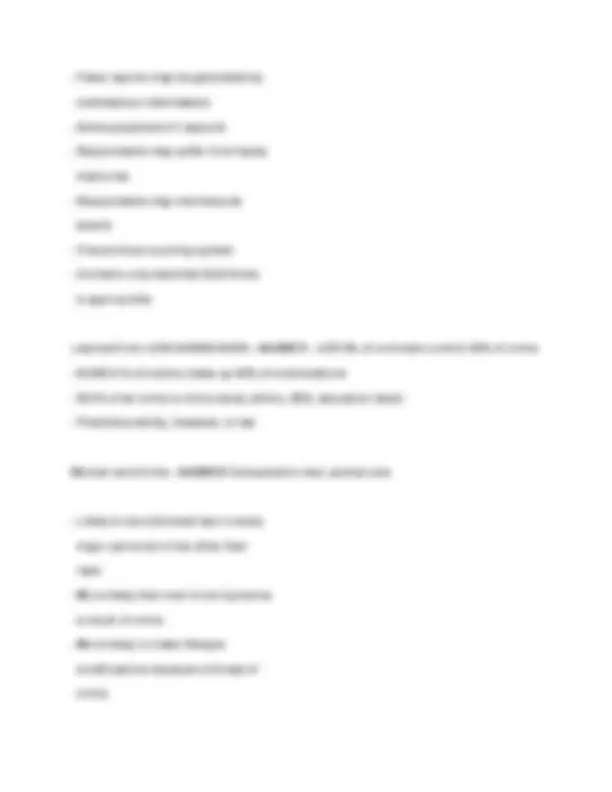
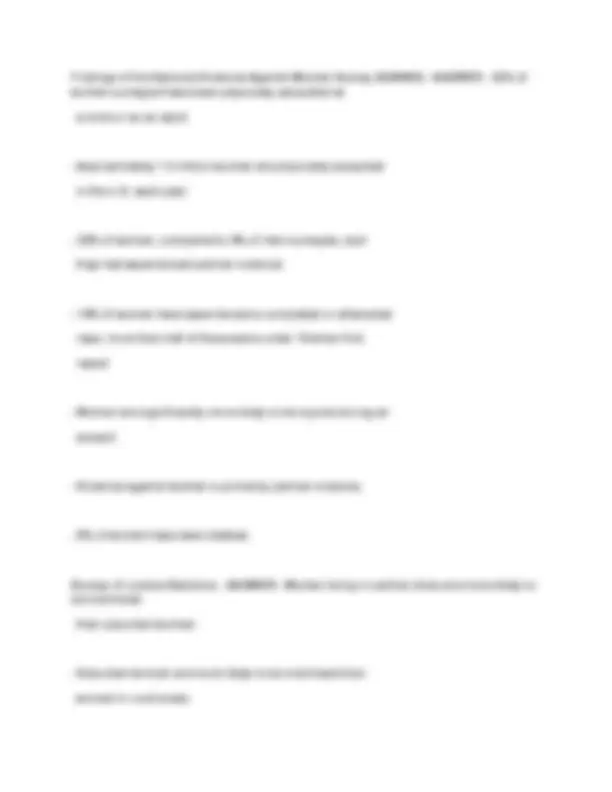
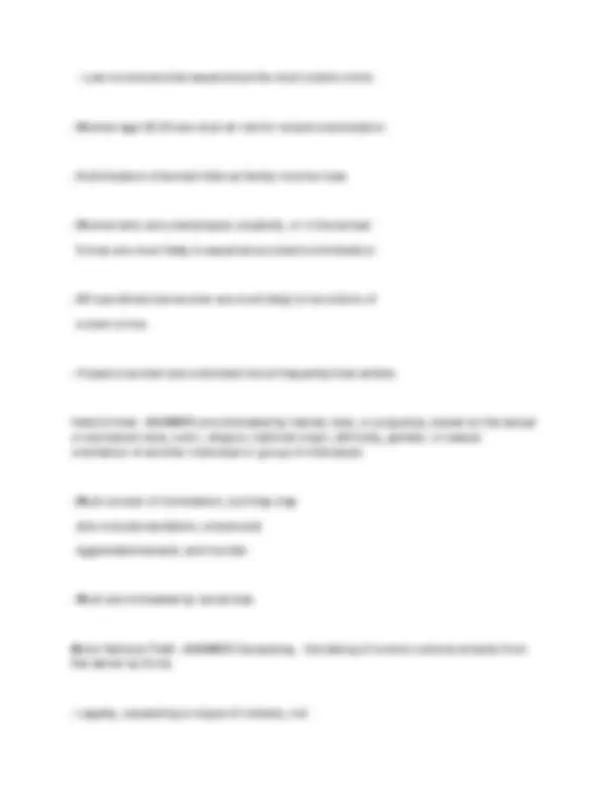

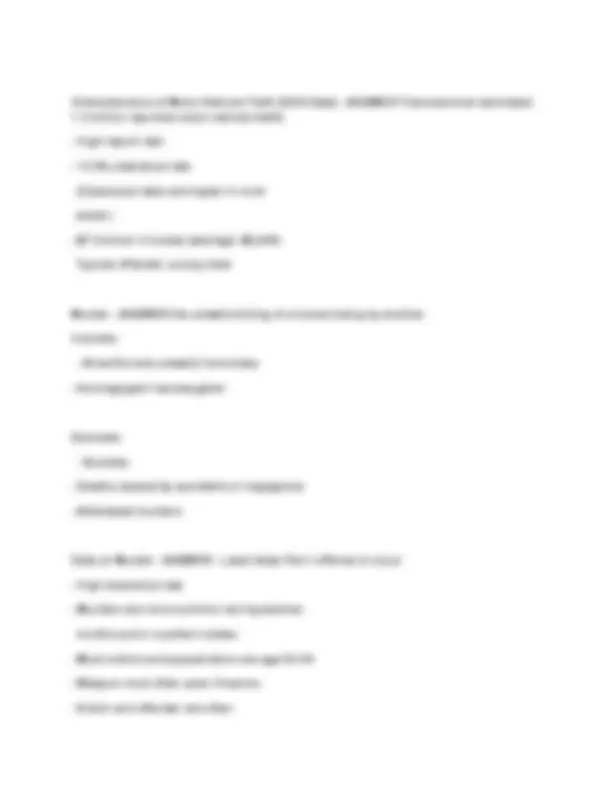
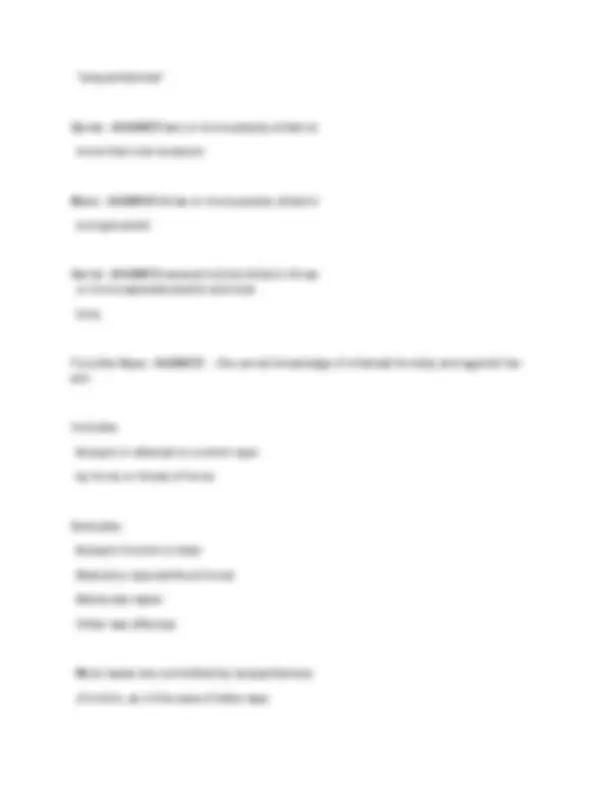
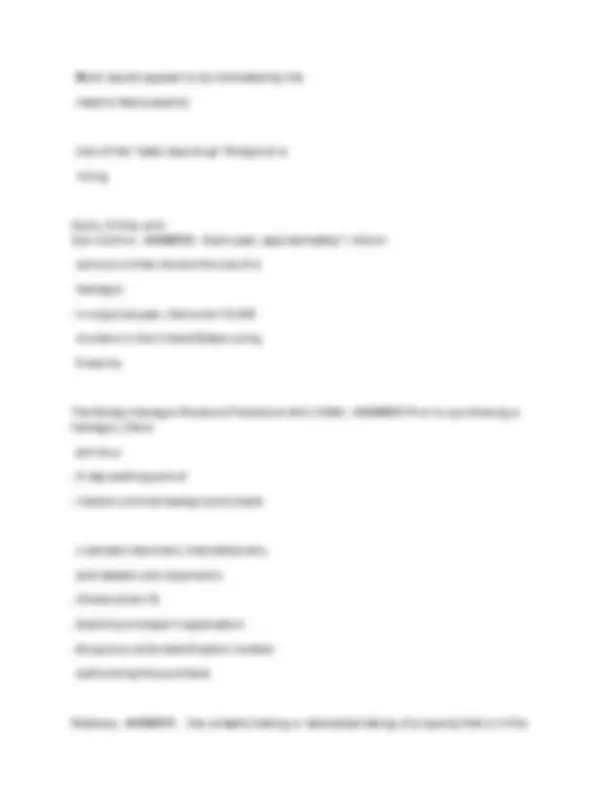
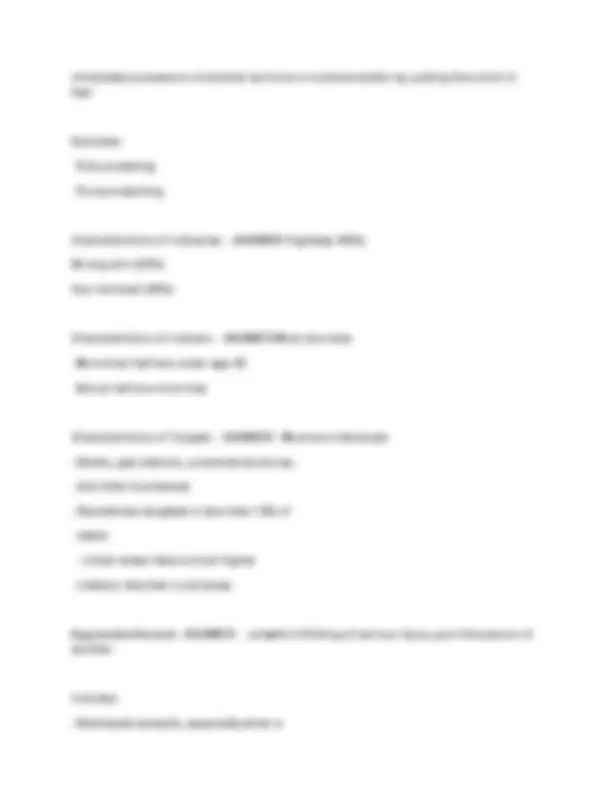
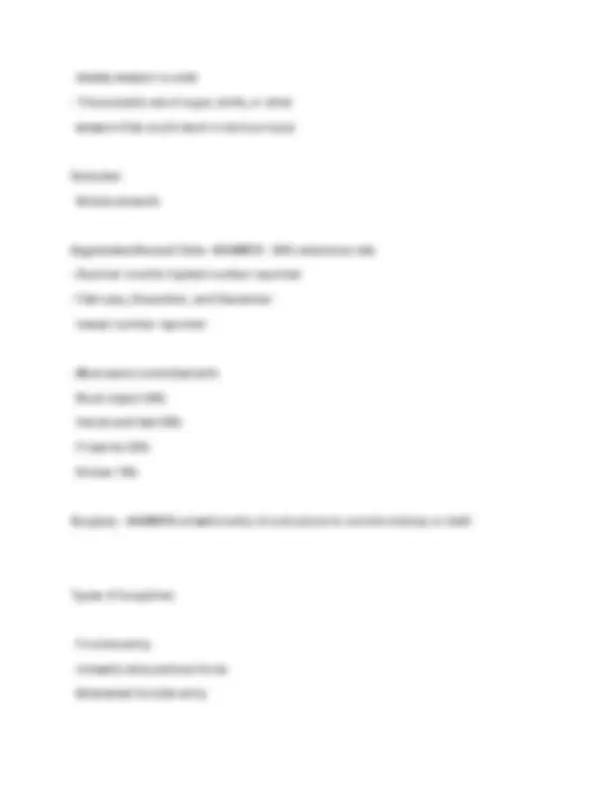
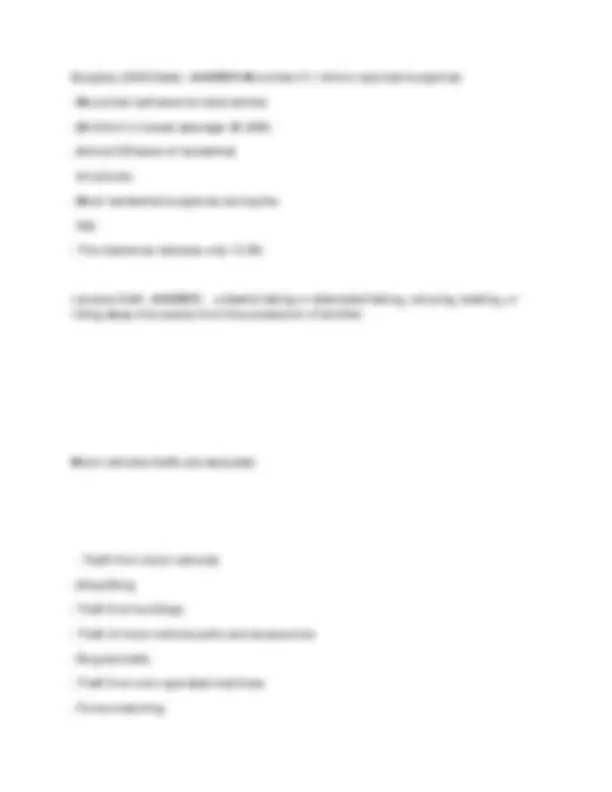
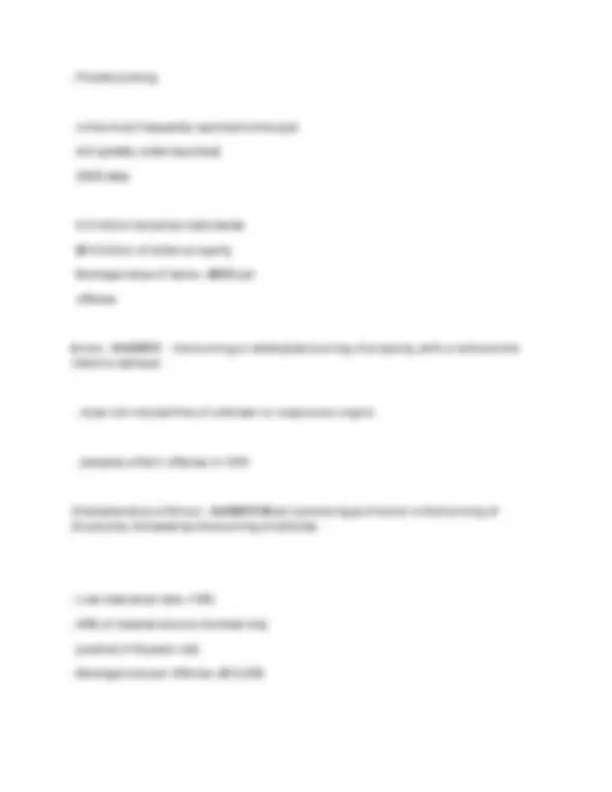


Study with the several resources on Docsity

Earn points by helping other students or get them with a premium plan


Prepare for your exams
Study with the several resources on Docsity

Earn points to download
Earn points by helping other students or get them with a premium plan
Community
Ask the community for help and clear up your study doubts
Discover the best universities in your country according to Docsity users
Free resources
Download our free guides on studying techniques, anxiety management strategies, and thesis advice from Docsity tutors
PA 241 Exam 1 With Complete Solution
Typology: Exams
1 / 30

This page cannot be seen from the preview
Don't miss anything!























U.S. Patriot Act - ANSWER -Restricts liberty by expanding gov't authority -"sneak and peek", "fed. DNA registry", email -2015 fight over USA Freedom Act USA Freedom Act - ANSWER a U.S. law enacted on June 2, 2015 that restored in modified form several provisions of the Patriot Act, which had expired the day before. The act imposes some new limits on the bulk collection of telecommunication metadata on U.S. citizens by American intelligence agencies, including the National Security Agency. It also restores authorization for roving wiretaps and tracking lone wolf terrorists. Biggest change is the requirement that all communications companies must provide call data to NSA. HOWEVER, it does mandate that communication companies must retain this data and provide specific data with proper court authorization Emile Durkheim (1800's) - ANSWER - sociologist that was interested in why things are the way they are.....suicide, social meaning of labels, crime Crime is normal! Crime is functional! What do laws do? - ANSWER -Maintain order -Regulate human interaction -Enforce moral beliefs -Define economic environment -Enhance predictability -Support powerful -Promote orderly social change -Identify wrongdoers, redress wrongs -Delineate punishment
Natural Law - ANSWER Sup. Ct. Justice Thomas, Locke, Rousseau
Symbolic politics Problems for Critical Perspectives - ANSWER 1. How does crime begin?
informed...of accusations...confronted with witnesses...assistance of counsel... Issue with the 14th - ANSWER ...No state shall...abridge privileges.. .of citizens...nor...deprive any person of llp, without due process...nor deny...equal protection of the laws. (passed 1868) Issue in Marbury v. Madison - ANSWER (1803) judicial review
own earlier decisions and by those of higher courts within their jurisdiction.
Public v. Private - ANSWER Civil : vs. Criminal law:
Similarities:
Two Major Types of Law - ANSWER Substantive Criminal Law Procedural Criminal Law
Substantive Criminal Law - ANSWER defines crimes and punishment
Procedural Criminal Law - ANSWER methods to enforce substantive law.
Rules of evidence, search and seizure, arrest, trial and sentencing, etc.
General Types of Crimes - ANSWER 1. Felonies
Felonies - ANSWER are serious crimes that are punishable by a year or more in prison or by death.
Misdemeanors - ANSWER are less serious crimes that are punishable by up to a year in a local correctional facility.
Most misdemeanants receive a fine and probation.
Concurrence - ANSWER act and mind come together.
Strict liability offenses - ANSWER are a special category of crime that require no culpable mental state.
The purpose of these absolute liability offenses is to protect the public.
Examples include: Traffic laws Narcotics laws Health and safety regulations
right - ANSWER often defined as an entitlement: For instance, all citizens are entitled to liberty of the person; equality; freedom of movement; freedom of speech, assembly and association; freedom of religion, among others.
Privileges - ANSWER. They can be revoked because they are conditional. Once the intended results have been met, privileges can be taken away but rights are much more difficult to restrict.
Defenses - ANSWER Justifications Excuses Procedural New:
Exclusionary Rule - ANSWER Weeks v. U.S. Silverthorne v. U.S. Mapp v. Ohio Spinnelli v. U.S. Illinois v. Gates
Weeks v. U.S. - ANSWER (1914) using U.S. mail for lottery purposes...mail confiscated without a warrant ...convicted...overturned and created ER.
Silverthorne v. U.S. - ANSWER (1920) avoiding taxes. confiscate business books...ER... police photocopy...convicted ...overturned conviction...SC...NEW (FPT).
Mapp v. Ohio - ANSWER (1961) harboring fugitive... bookmaking...search w/o...found porn... convicted...overturned conviction applied ER to state.
Spinnelli v. U.S. - ANSWER (1969) pc-informant...(3 Prongs: veracity, reliability, basis of knowledge)
Illinois v. Gates - ANSWER (1983) pc-informant...drug transportation ...anonymous letter...convicted...affirmed...NEW (TOC).
More on Warrants (clarification) - ANSWER U.S. v. Leon Maryland v. Garrison
U.S. v. Leon - ANSWER pc-informant...warrant issued...convicted...
Criminal Justice Funnel - ANSWER 1000 serious crimes > 500 unreported crimes > so only 500 reported > 400 unsolved crimes > 100 people actuallt arrested:
35 juveniles to court > 30 put on probation or dismissed > 5 remain in the system
65 adults considered for prosecution > 25 dropped > 40 cases accepted > 10 jump bail or abscond > 30 go to trial > 17 plead guilty & 2 found guilty ( 19 sentenced) > 4 go to probation & 14 incarerated
The Value of Data - ANSWER - Shape public policy
Sources of Data - ANSWER - Uniform Crime Reports (also known as the UCR/NIBRS Program)
Uniform Crime Reports - ANSWER - The reports began in 1930.
included.
UCR: Crime Index - ANSWER The Index is made up of Part I Offenses (excluding arson).
Part I Offenses - ANSWER - Violent Crime: murder, rape, robbery, assault
NIBRS: The New UCR - ANSWER National Incident Based Reporting System Incident driven, rather than summary based (note: What is the hierarchy rule?)
NIBRS - ANSWER - place of occurrence
Crime Rate - ANSWER number of crimes / 100,000 population
Most UCR/NCVS information is reported as a rate of crime
Rates allow for comparison across areas and times.
Major Shifts in Crime Rates - ANSWER Early 1940s — Sharp drop in crime rate as many young men went to WWII.
1960s-early 1990s — Dramatic increase in crime rates as police professionalism and victim reporting grew.
1991-2006 — Significant decline in most major crime rates as funding for crime fighting increase and many embrace a "get tough" attitude. Likely pushed by downward trend in crimes like "crack" use and popularity
2006-on — Violent crime rates starting to rise slowly again pushed by economic uncertainty, more teens, copycat crimes, and social disorganization but have oscillated up to 2014.
Clearance Rate - ANSWER number of crimes solved / number of crimes committed
Clearances are based on arrests, not judicial dispositions.
Part II Offenses - ANSWER Part II offenses are less serious than Part I offenses and include many social orderoffenses, such as:
Slightly more than 1/3 of all property crime is reported.
Victims are more likely:
Household crime rates are highest for households: - ANSWER - Headed by younger people
Problems with UCR/ NIBRS - ANSWER - Not everyone reports
Problems with NCVS - ANSWER - There is potential for false or exaggerated reports
Learned from UCR/ NIBRS/ NCVS - ANSWER - UCR 6% of criminals commit 60% of crime
Women and Crime - ANSWER Compared to men, women are: